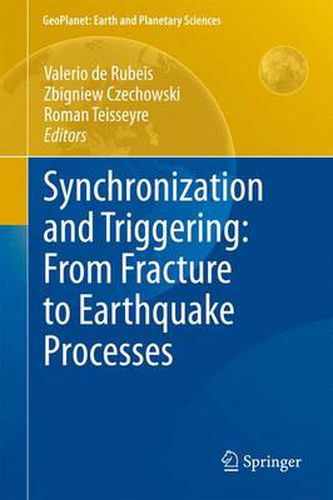Readings Newsletter
Become a Readings Member to make your shopping experience even easier.
Sign in or sign up for free!
You’re not far away from qualifying for FREE standard shipping within Australia
You’ve qualified for FREE standard shipping within Australia
The cart is loading…






This title is printed to order. This book may have been self-published. If so, we cannot guarantee the quality of the content. In the main most books will have gone through the editing process however some may not. We therefore suggest that you be aware of this before ordering this book. If in doubt check either the author or publisher’s details as we are unable to accept any returns unless they are faulty. Please contact us if you have any questions.
Processes of synchronization and interaction play a very special role in different physical problems concerning the dynamics of the Earth’s interior; they are of particular importance in the study of seismic phenomena, and their complexity is strongly affected by the variety of geological structures and inhomogeneities of the medium that hamper the course of these processes and their intensity. The attempt to tackle these problems is a great challenge from experimental, observational and theoretical point of view. We present in this Monograph the theoretical and experimental results achieved in the frame of the European Project Triggering and synchronization of seismic/ acoustic events by weak external forcing as a sign of approaching the critical point (INTAS Ref. Nr 05-1000008-7889); in this Project, which was inspired by Professor Tamaz Chelidze, our aim was to give grounds for better understanding and interpretation of dynamical interactive processes of physical ?elds, both found in the laboratory experiments as well as in ?eld observations. One of the leading problems - related to synchronization and interaction of different physical ?elds in fracture processes concerns triggering and initiation of rupture and displa- ments within the Earth interior. From this point of view, the results from laboratory studies on synchronization and interaction and those found and involved in ?eld observations, helped to improve the theoretical background. Reversely, some of the presented new theoretical approaches have served to stimulate laboratory and ?eld studies.
$9.00 standard shipping within Australia
FREE standard shipping within Australia for orders over $100.00
Express & International shipping calculated at checkout
This title is printed to order. This book may have been self-published. If so, we cannot guarantee the quality of the content. In the main most books will have gone through the editing process however some may not. We therefore suggest that you be aware of this before ordering this book. If in doubt check either the author or publisher’s details as we are unable to accept any returns unless they are faulty. Please contact us if you have any questions.
Processes of synchronization and interaction play a very special role in different physical problems concerning the dynamics of the Earth’s interior; they are of particular importance in the study of seismic phenomena, and their complexity is strongly affected by the variety of geological structures and inhomogeneities of the medium that hamper the course of these processes and their intensity. The attempt to tackle these problems is a great challenge from experimental, observational and theoretical point of view. We present in this Monograph the theoretical and experimental results achieved in the frame of the European Project Triggering and synchronization of seismic/ acoustic events by weak external forcing as a sign of approaching the critical point (INTAS Ref. Nr 05-1000008-7889); in this Project, which was inspired by Professor Tamaz Chelidze, our aim was to give grounds for better understanding and interpretation of dynamical interactive processes of physical ?elds, both found in the laboratory experiments as well as in ?eld observations. One of the leading problems - related to synchronization and interaction of different physical ?elds in fracture processes concerns triggering and initiation of rupture and displa- ments within the Earth interior. From this point of view, the results from laboratory studies on synchronization and interaction and those found and involved in ?eld observations, helped to improve the theoretical background. Reversely, some of the presented new theoretical approaches have served to stimulate laboratory and ?eld studies.